We use cookies to personalize content and advertisements, to offer social media functions and to analyze access to our website.
You can revoke the given consent at any time. You can find further information in our Privacy Policy.
Oct 2015
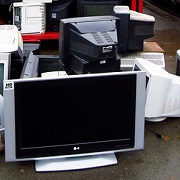 As one of the last EU member states, Germany has put into force its implementation of the EU WEEE Directive 2012/19/EU into national law last Saturday: The ElektroG2 went effective on October 24, 2015. Compared to the former ElektroG1, the new ElektroG2 foresees various changes and new obligations also for retailers and distance sellers.
As one of the last EU member states, Germany has put into force its implementation of the EU WEEE Directive 2012/19/EU into national law last Saturday: The ElektroG2 went effective on October 24, 2015. Compared to the former ElektroG1, the new ElektroG2 foresees various changes and new obligations also for retailers and distance sellers.
As distributors will have to face new collection requirements at point-of-sale (0:1 and 1:1 take-back), we offer collection solutions which could be easily established, together with our sister company TechProtect. These collection solutions are completed by our comprehensive consulting for obliged distributors of electrical and electronic equipment, e.g. with respect to new notification and information requirements, as well as our administrative services.
For more information, please contact info@1cc-consulting.com.
Oct 2015
 As one of the last EU member states, Germany transposes the new EU WEEE Directive (2012/19/EU) into national law: The ElektroG2 will enter into force on October 24, 2015. One of the most important changes refers to the new producer definition and the appointment of an Authorized Representative (AR).
As one of the last EU member states, Germany transposes the new EU WEEE Directive (2012/19/EU) into national law: The ElektroG2 will enter into force on October 24, 2015. One of the most important changes refers to the new producer definition and the appointment of an Authorized Representative (AR).
A foreign distance seller who sells directly to end-users in Germany is then explicitly mentioned to be the “producer” and will therefore have to fulfil all producer obligations as e.g. registering and reporting. In order to manage this task, he will have to appoint an AR. If a foreign manufacturer sells its products via the distribution channel, the importer is considered to be the “producer”. However, the law still provides the possibility that the manufacturer appoints an AR in Germany who assumes all obligations.
1cc has elaborated different courses of action to ensure your future WEEE compliance in Germany:
1. Evaluation of your current WEEE obligations (sales via an importer, only distance selling, sales via an importer and distance selling)
2. Individual assessment of the options to appoint an AR:
3. Organising the necessary contracting with the selected AR and adaptation of your registration with Stiftung ear
For more information, please contact us at info@1cc-consulting.com
Oct 2015
On 01, Oct 2015 | In Copyright Levies, News @en | By Alisa Maier
As of 1 October 2015, significant amendments to the Austrian Copyright Act enter into force. The legal basis for copyright levy matters is being changed in key aspects such as:
All companies having copyright levy obligations should observe these changes. Of course, 1cc is here to help you.
Sep 2015
 In the light of the upcoming German ElektroG2, Stiftung EAR has adapted the types of equipment that fall under Category 5 for Lighting Equipment:
In the light of the upcoming German ElektroG2, Stiftung EAR has adapted the types of equipment that fall under Category 5 for Lighting Equipment:
Type of equipment 5.1.1 “Gas discharge lamps, for the use in private households” remains unchanged.
Completely new is type of equipment 5.1.2. “Lamps, except gas discharge lamps, for the use in private households”. LED lamps e.g. will fall under this new type of equipment.
Luminaires with exchangeable light sources have been added to type of equipment 5.2. “Luminaires and devices for the dispersion of light for the use in private households”. Luminaires with non-exchangeable, fixed light sources remain in this type of equipment.
Companies who need a different or additional registration, have to inform Stiftung EAR within a period of three months after the new ElektroG2 has entered into force. 1cc will support you with the necessary support and services.
For more information please contact info@1cc-consulting.com.
Sep 2015
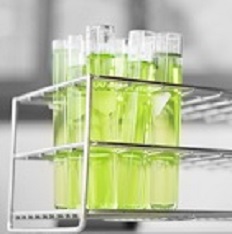 The European Court of Justice (ECJ) has published the long expected judgment on the decision regarding the threshold of 0,1 % of Substances of Very High Concern (SVHC) according to EU REACH Regulation on September 10, 2015.
The European Court of Justice (ECJ) has published the long expected judgment on the decision regarding the threshold of 0,1 % of Substances of Very High Concern (SVHC) according to EU REACH Regulation on September 10, 2015.
Article 33 of EU REACH Regulation No 1907/2006, as amended, must be interpreted as follows: The supplier of a product which consists of one or more constituent articles which contain a substance of very high concern identified in accordance with REACH Article 59(1) in a concentration above 0.1% weight by weight of that article, has to inform the recipient and, on request, the consumer, of the presence of that substance by providing them, as a minimum, with the name of the substance in question.
The threshold of 0,1 % is no longer calculated on basis of the whole article (former ECHA interpretation), but of each single constituent article the product consists of. Suppliers of articles now have to review their compliance system (communication, data management etc.) with respect to the additional information requirements according to REACH Article 33.
1cc supports companies with handling of SVHC communication as well as further requirements according to the obligations ruled by REACH.
Aug 2015
 In the Official Gazette No. 4579 of the August 14, 2015 the Saudi Standards, Metrology and Quality Organization (SASO) announced that the Standard “SASOXXXX:2015, Energy Efficiency, Functionality and Labeling Requirements for Lighting Products, Part1” entered into force on August 14, 2015.
In the Official Gazette No. 4579 of the August 14, 2015 the Saudi Standards, Metrology and Quality Organization (SASO) announced that the Standard “SASOXXXX:2015, Energy Efficiency, Functionality and Labeling Requirements for Lighting Products, Part1” entered into force on August 14, 2015.
Manufactures have a period of six month to adjust their products to the requirements of the technical regulation. Registration at SASO is mandatory in order to access the Saudi market.
Aug 2015
On 06, Aug 2015 | In News @en | By Alisa Maier
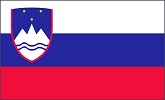 Slovenia has finally transposed Directive 2012/19/EU (WEEE Recast) into national law: Regulation No. 2350 on Waste Electrical and Electronic Equipment (2350. Uredba o odpadni električni in elektronski opremi) was officially published in the Slovenian Official Gazette on July 24, 2015.
Slovenia has finally transposed Directive 2012/19/EU (WEEE Recast) into national law: Regulation No. 2350 on Waste Electrical and Electronic Equipment (2350. Uredba o odpadni električni in elektronski opremi) was officially published in the Slovenian Official Gazette on July 24, 2015.
There are still Germany and Poland missing, which have to publish final legislations. In Belgium, only Flanders has already transposed the WEEE Recast Directive into national law.
Aug 2015
 The new German regulation on WEEE (ElektroG2) is expected to come into force in autumn having passed the German Federal Council in the beginning of July without any amendments. Besides other changes it imposes new obligations on retailers including distance sellers. Amongst others, end users will be allowed to return their WEEE to a retailer free of charge. Retailers have to assure the environmentally sound recycling.
The new German regulation on WEEE (ElektroG2) is expected to come into force in autumn having passed the German Federal Council in the beginning of July without any amendments. Besides other changes it imposes new obligations on retailers including distance sellers. Amongst others, end users will be allowed to return their WEEE to a retailer free of charge. Retailers have to assure the environmentally sound recycling.
Our clients benefit from comprehensive consulting, for instance on information and notification requirements, as well as our administrative services. Together with our affiliated company TechProtect we offer convenient take-back solutions to retailers for 0:1 take-back (this means no initial purchase is made at the same time) as well as for 1:1 take-back (an equivalent device is bought).
Are you interested? Please contact:: info@1cc-consulting.com
Jul 2015
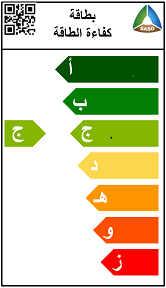 The Saudi Arabian Standards, Metrology and Quality Organization SASO has recently published a draft version of the standard “SASOXXXX:2015, Energy Efficiency, Functionality and Labeling Requirements for Lighting Products, Part1”.
The Saudi Arabian Standards, Metrology and Quality Organization SASO has recently published a draft version of the standard “SASOXXXX:2015, Energy Efficiency, Functionality and Labeling Requirements for Lighting Products, Part1”.
The draft standard focuses on indirect and direct lamps having a luminous flux above 60 lumens or below 12 000 lumens.
Products in Scope are:
• Incandescent lamps
• Compact fluorescent lamps with integrated ballast (CFLi)
• Halogen lamps
• Light-emitting diode (LED) lamps (Incandescent retrofit types)
• Light-emitting diode (LED) lamps (Halogen retrofit types)
These lighting products have to fulfil a variety of requirements with respect to electrical safety, electromagnetic compatibility, performance, functionality, marking, energy efficiency and hazardous chemicals. When it comes to substance restrictions, the standard basically follows the requirements of EU Directive 2011/65/EU, with the exemption of Mercury.
The draft standard requires an energy efficiency label for all products in scope. This specific label for lighting products differs from the so far established energy efficiency label for household electrical appliances and is similar to the respective EU label.
Jul 2015
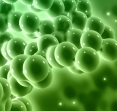 Nanomaterials are more and more used in cosmetics, pharmaceutics, paint and further products. The OECD has now completed a 7-year study on nanomaterials. The new findings shall be included into the current test-guidelines for nanomaterials.
Nanomaterials are more and more used in cosmetics, pharmaceutics, paint and further products. The OECD has now completed a 7-year study on nanomaterials. The new findings shall be included into the current test-guidelines for nanomaterials.
In the EU, nanomaterials are in general covered by the REACH and CLP regulation; however they are not regulated in a special way. The European Chemicals Agency (ECHA) is already examining if separate rules are necessary for protection of the potential hazards of nanomaterials. Right now, ECHA has called on registrants to update their registration dossiers with the newly available information.
French regulation on nanomaterials
France has a specific regulation on registration and notification for nanomaterials since 2013. Manufacturers, Importers and distributors have to notify nanomaterials in an annual volume above 100 g to the agency in charge, ANSES.
France is expecting further EU-member states to follow the lead and specifies countries like Italy, Belgium and Denmark. Most information on the regulation is only available in French, so companies that seek help for a notification in France are invited to contact 1cc.